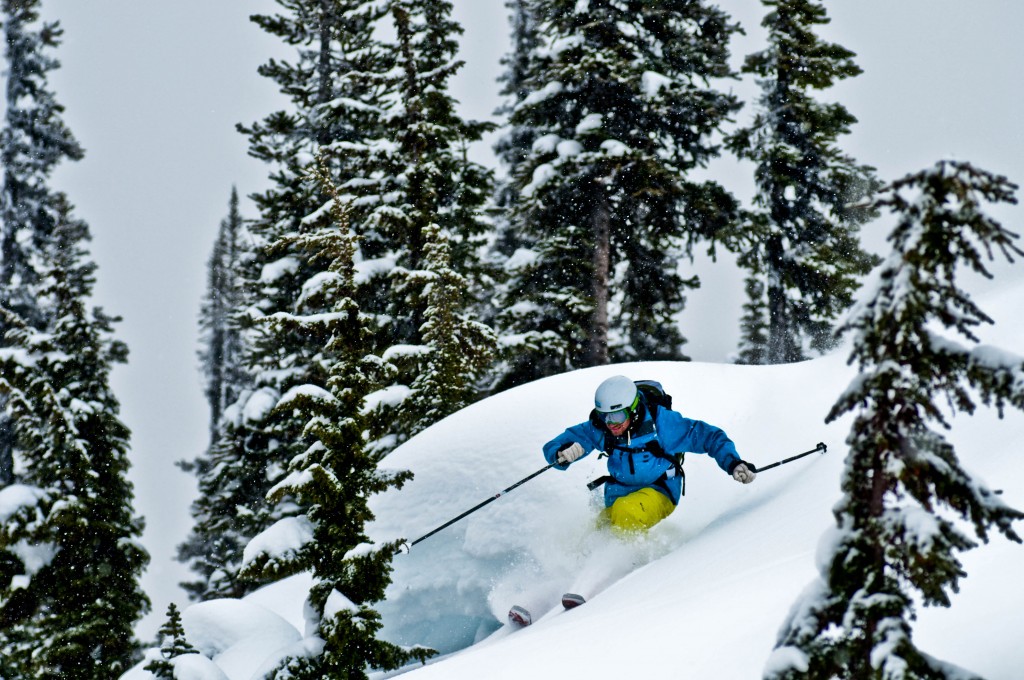Heli Skiing Skis: How they are constructed
Whether you’re heli skiing in Alaska, northern BC, or just ripping up the piste at your local resort, you probably aren’t giving much thought to the construction of your skis.
The fact is, even with all the evolutions in technology and design skis are still relatively simple affairs. Yet, how many people know exactly what their skis are constructed of? Lets take a closer look at some of these construction methods, and the anatomy of skis.
Most skis are constructed in layers, called laminate or sandwich construction. Layers of horizontal sheets of different materials are pressed together and contained within the vertical sidewalls. This makes for great power and an unwavering edge hold.
The topsheet is commonly made from clear plastic that has the artwork underneath. Beneath this we’ll find laminates. These are reinforcing sheets of materials, and are found either side of the core of the ski.

Commonly constructed from fiberglass fabrics or metals, the former gives a light and lively feel, whereas the latter is more stable. Some companies use a bamboo laminate that boasts great strength, yet is still flexible and lively.
The heart of a pair of skis, the core is the element around which everything else is built. Foam cores are generally found in lower end and cheaper models, and have been produced by filling the hollow skis from the outside in.
More expensive, higher end skis with foam cores, are shaped from blank foams and then placed into the molds. Wooden cores, found in many of the best skis, are vertical sheets of wood laminated together for added strength. What they lack in lightness they more than make up for in durability, dampening and pop.
The sidewalls that keep everything in place within the skis can be manufactured to different densities to give endless varieties of performances. The base, a sheet of plastic upon which you glide, actually has minute little grooves running through to reduce friction and facilitate smoother skiing.

Generally they are made from high-density polyethylene. Lastly we have the edge of the ski, which has historically been a strip of stainless steel, that when sharpened, was designed to give maximum grip in a whole range of snow conditions.
Two other specialized methods of constructing skis include torsion boxes and caps. The torsion box is usually found in skis with wooden cores. This wood has been enclosed in a fiberglass wrap, soaked in epoxy, and cured.
The end product is a core that will not twist, or only allows a predestined amount of torsional twisting. Many companies, due to its lighter weight without loss of strength, favor this method of construction.
The cap construction method of manufacturing is where the whole topsheet curves right down to the edges of the skis, eliminating the need for sidewalls. Although uncommon, this method of making skis is said to result in a more forgiving ski, although they will generally be less edgy.
Tags: Heli Skiing, Heliskiing, Heli Ski, Heliski, Heli Skiing Tour, Heli Skiing Holiday, Heli Skiing BC, Heli Skiing Resorts, Heli Skiing Lodges


